Your cart is currently empty!
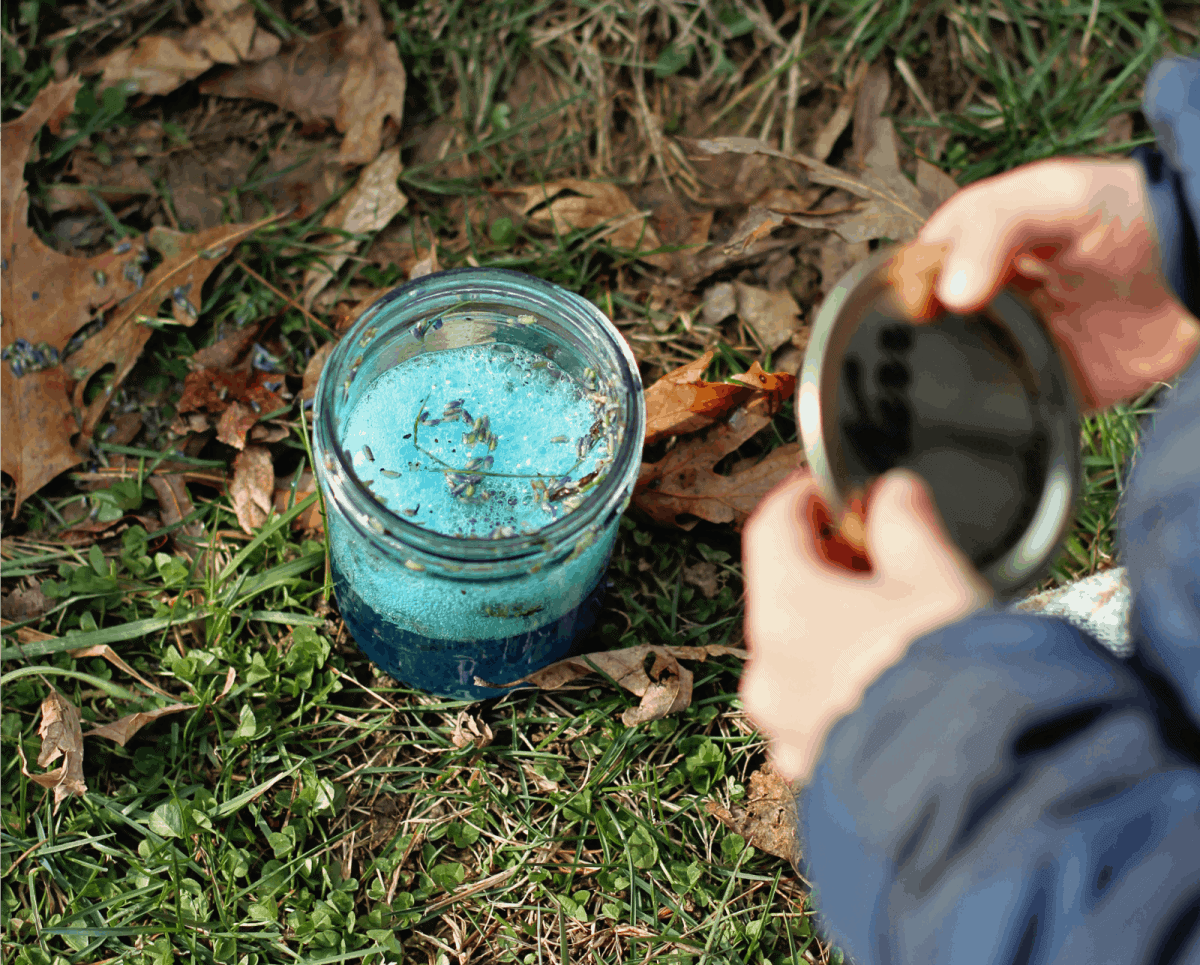
Everything You Wanted to Know About Tinkergarten
Raise your hand if you’ve ever heard of Tinkergarten? Tinkergarten offers outdoor, play-based education classes for kids 18 months to 8 years old (accompanied by an adult). Both kids and adults learn and grow together in the best classroom of all – nature! Tinkergarten believes that independent exploration, risk taking and getting a bit dirty help kids achieve great things – and we totally agree!
Today we’re taking the opportunity to tell you everything you ever wanted to know about this awesome outdoor educational program. We’ll walk you through the basic structure of the class, explain why outdoor education is important and give you all kinds of info about becoming a Tinkergarten Leader. We even have a wonderful interview with an experienced Tinkergarten Leader out of Oklahoma City, who will answer all your questions about the process and her experience.
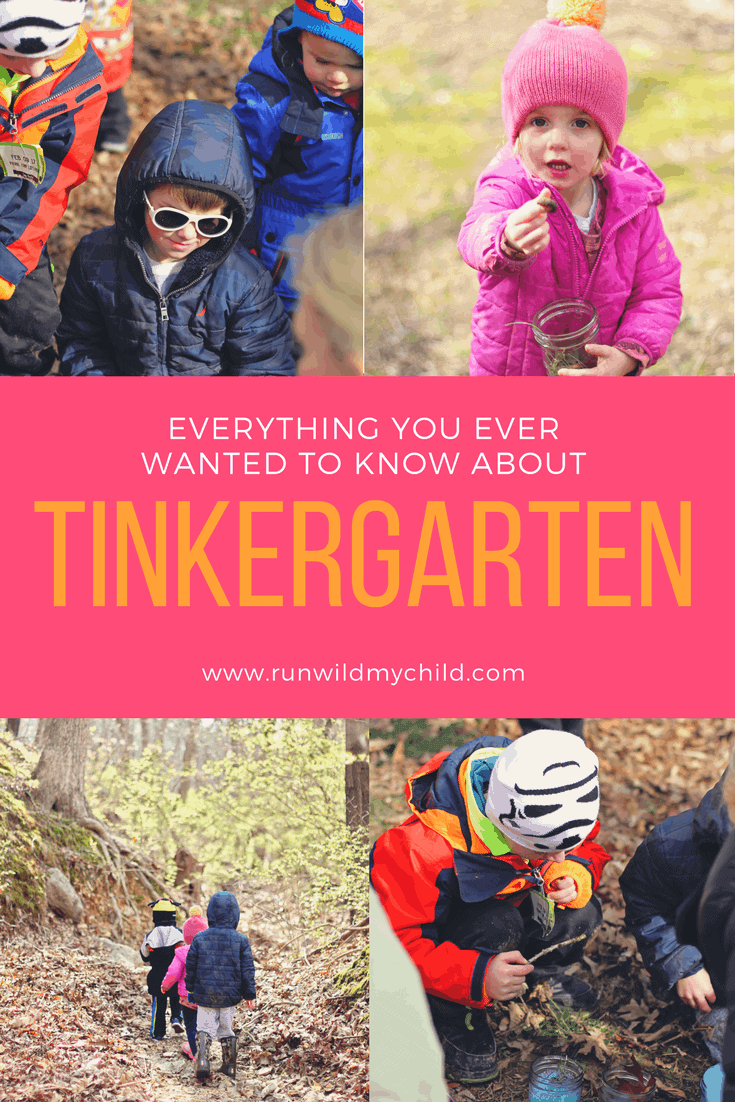
{post contains affiliate links}
What is Tinkergarten?
Tinkergarten is a fast-growing network of 1,300 leaders who run independent classes. Each Leader brings a wide range of experiences and talents to their job. The Tinkergarten curriculum is based on core educational values and adapts to your particular region and season. Lessons are age-appropriate and span a broad range of skills. The activities presented in class progressively build week after week, season after season. In each class, kids are encouraged to drive their own learning – an engaging scenario allows kids to launch and direct their own play. No two kids ever have the same experience, because it’s the process that matters!
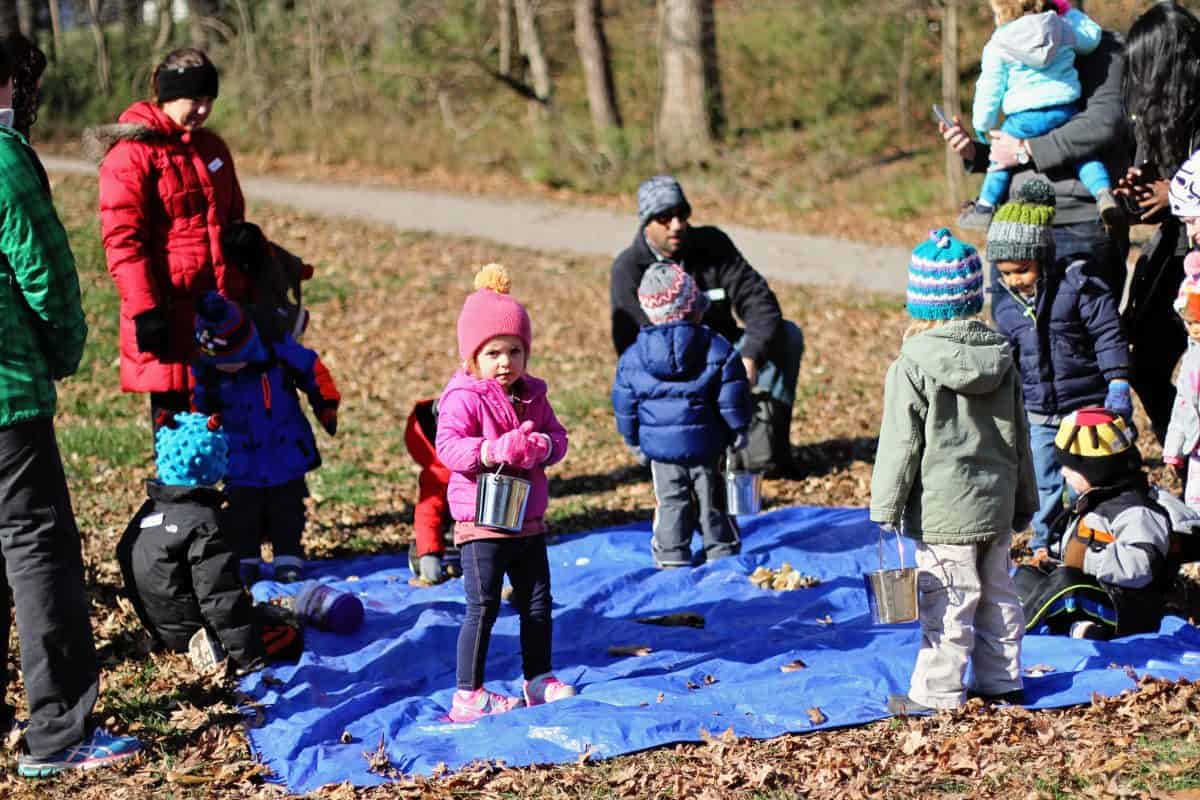
Some classes focus on a specific age range (such as 18-36 months, 3-5 years, etc). Others are available to children anywhere between 18 months and 8 years. By working with a smaller age range, classes can be more finely tailored to the developmental level of the children who participate. The larger age range lets whole families participate together. This also provides a chance for younger kids to benefit from the modeling and support of older kids. For older kids, it offers them a chance to be leaders for their younger classmates. Age ranges are meant to be used as guidelines, and many activities can be adapted for younger or older children.

All Tinkergarten sessions take place outside, in a local public green space. Each class follows a loose structure that includes an opening circle, main activity, closing circle and snack. The main activity focuses on open-ended exploration and play where kids actively engage in imagining, exploring and/or problem solving. While this activity is planned and guided by an adult, the interests of the children play a large role in shaping the way it unfolds. Snack time then allows children and their adults to relax and reflect on their learning and experiences.

The importance of outdoor education
Outdoor, play-based learning is a proven way to give children a solid foundation and love of education and nature. According to Scientific American, “Nearly all developmental psychologists, neuroscientists and education experts recommend play for kids 0-7 as the best way to nurture development and ready them for academic success later in life.” It’s also been shown that 80+% of brain development occurs before the age of five. Foundational skills built in those first 5 years will affect learning for the rest of their life.
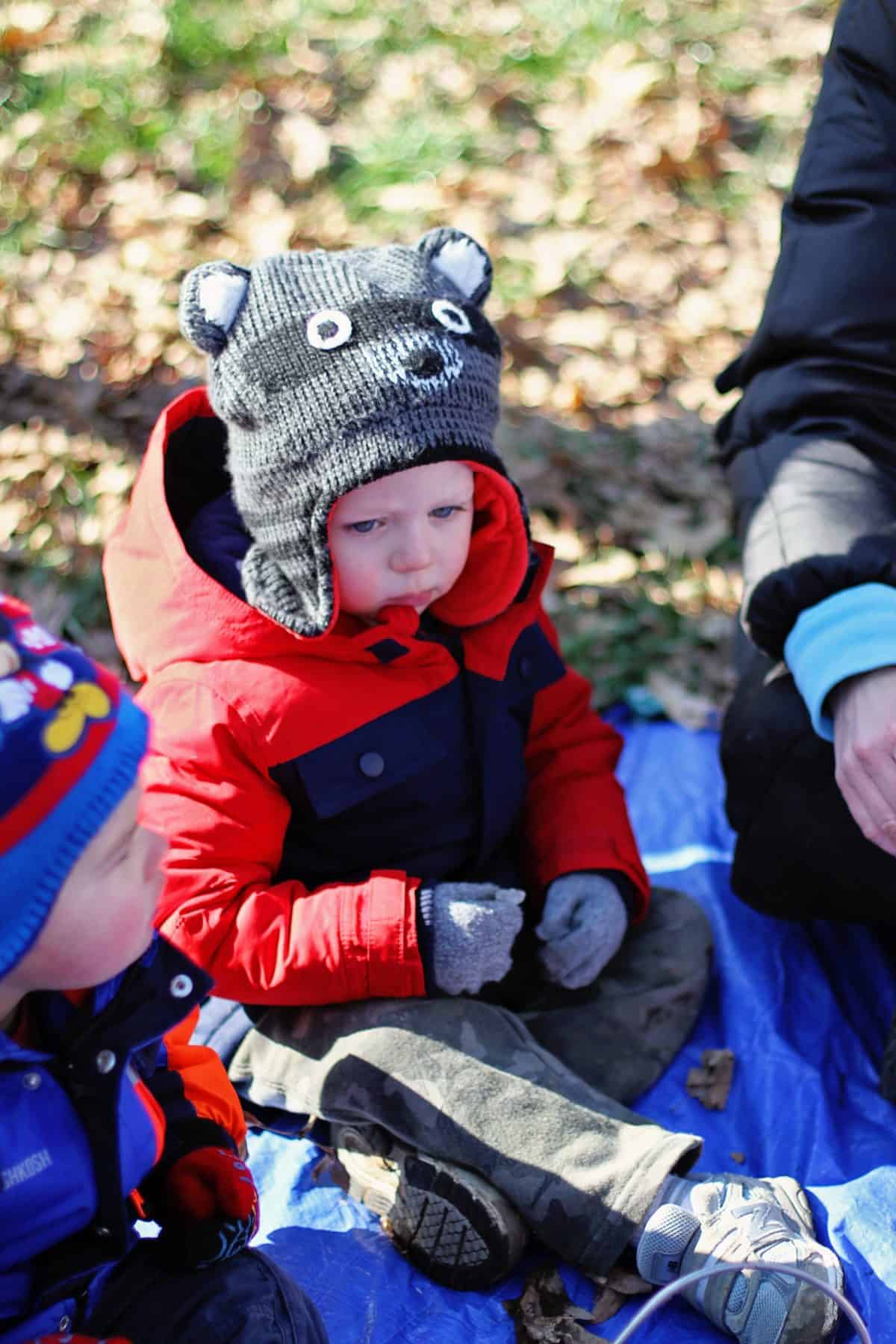
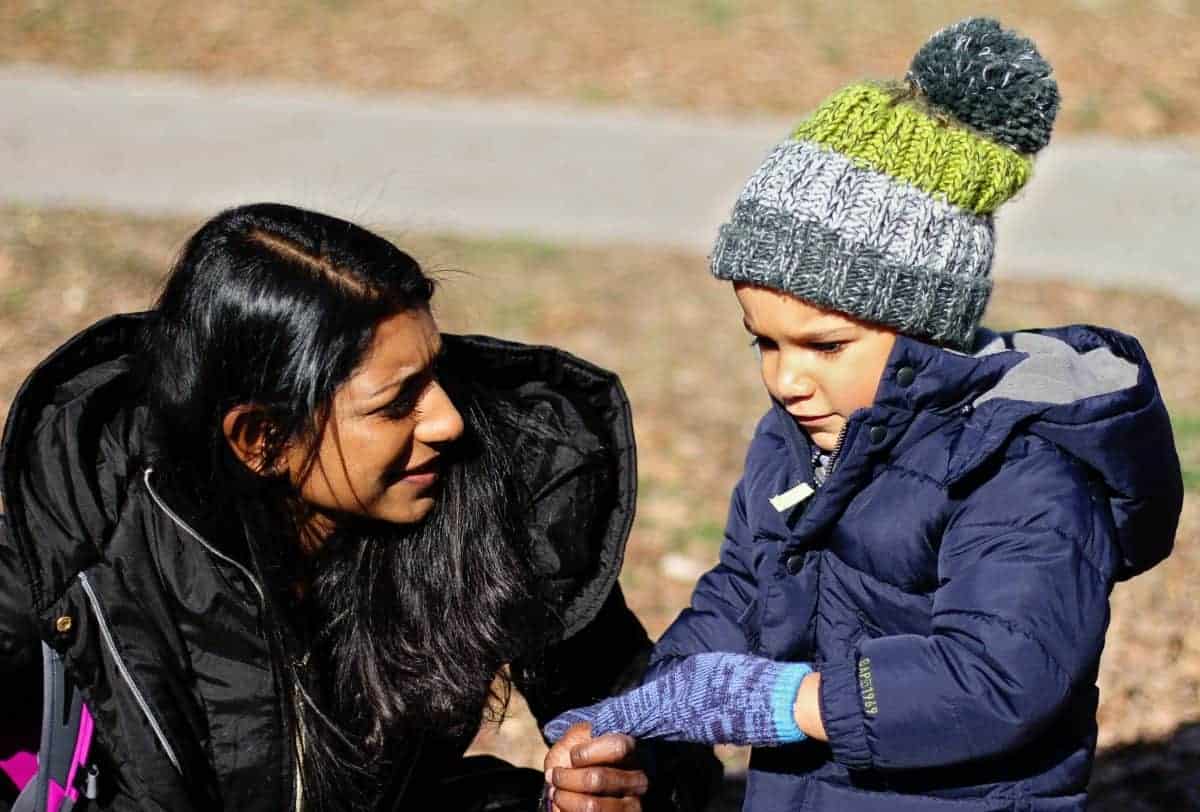
Time and again, research proves that spending time outdoors provides children with a wide range of health benefits including social and emotional well-being. Outdoors in nature is the best classroom. When children play outdoors they are both stimulated and calmed. With the right guidance and learning opportunities, children open up, push limits, tinker, create, and problem solve. As a result of taking a Tinkergarten class, 82% of families spend more time playing outdoors together and 92% of families gained new ways to engage in their children’s play!


Try out a class
If you’re at all interested in Tinkergarten, I highly encourage you to try out a class! Prior to the start of a class, leaders organize free class sessions so that parents and children can experience a “Taste of Tinkergarten.” These free events, and all classes, can be found by visiting the Tinkergarten website and finding your location. Spring classes are starting soon, so go ahead and get registered for a class. You can also join a class even after the session has started, if there’s room. Check out the Tinkergarten website to find a class in your area.
My kids and I had the chance to check out a Tinkergarten class in our area last spring. The class we attended was in a (new to us) park that we were excited to explore. We started the class with an opening circle that included introductions and a song. Our main activity for the class was to create a fairy potion, using elements from nature. The kids all loved exploring the area and filling their individual jars with grass, twigs, leaves, flowers, rocks, acorns, etc. The kids explored the park, climbed the hill and stomped through the creek. They loved the freedom to perform the task at their own pace and having control over their own collection.
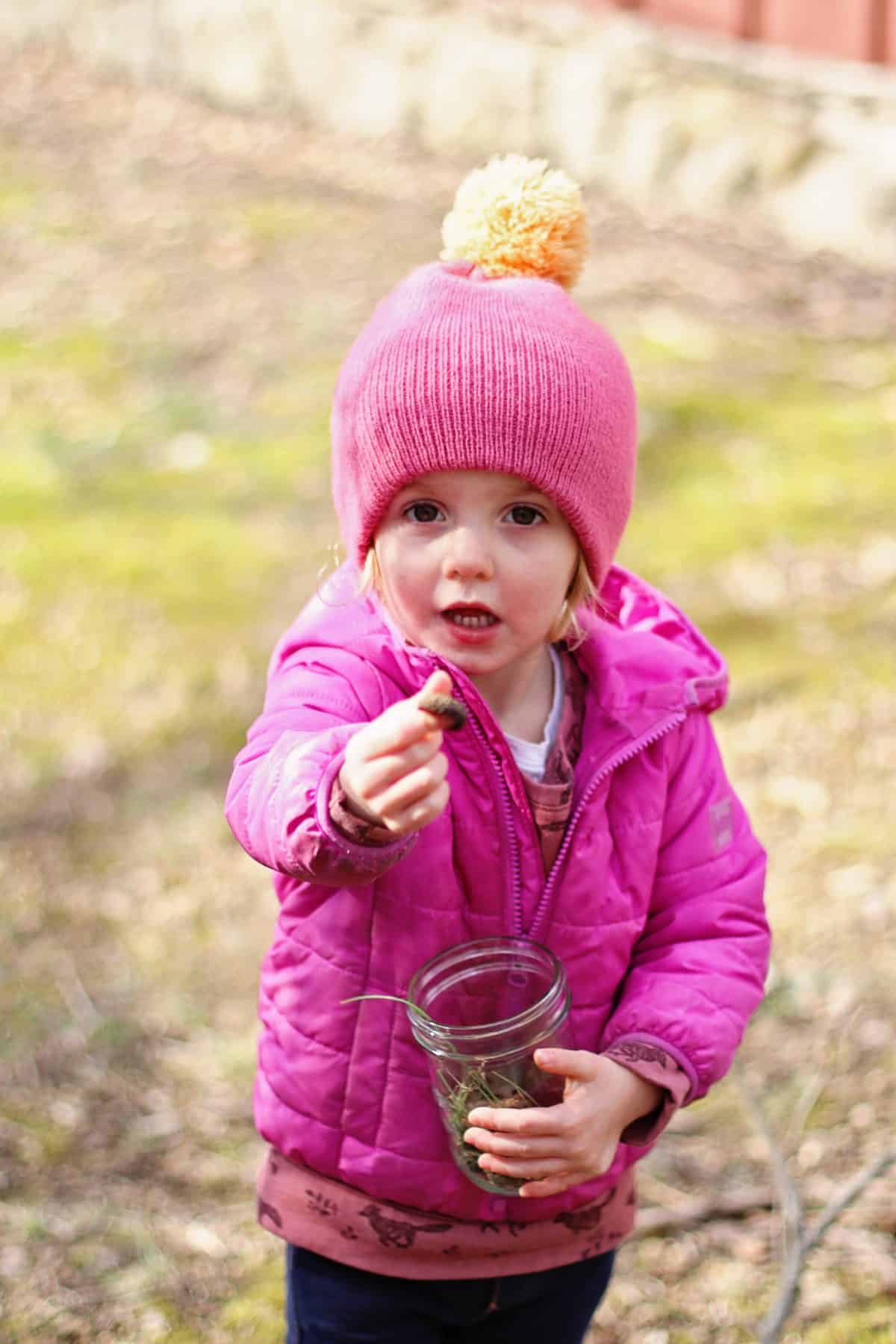


Once the jars were filled with natural elements, the Leader added water, food coloring and a bit of baking soda. The kids loved watching their potion boil and bubble – the look of magic on their faces was adorable! After the activity, we joined all the other kids on the tarp for snacks and another parting song or two. After the class, the kids all stuck around to continue their exploration of the park, while the parents chatted and caught up. Overall, it was a really fun experience for both the kids and the adults.



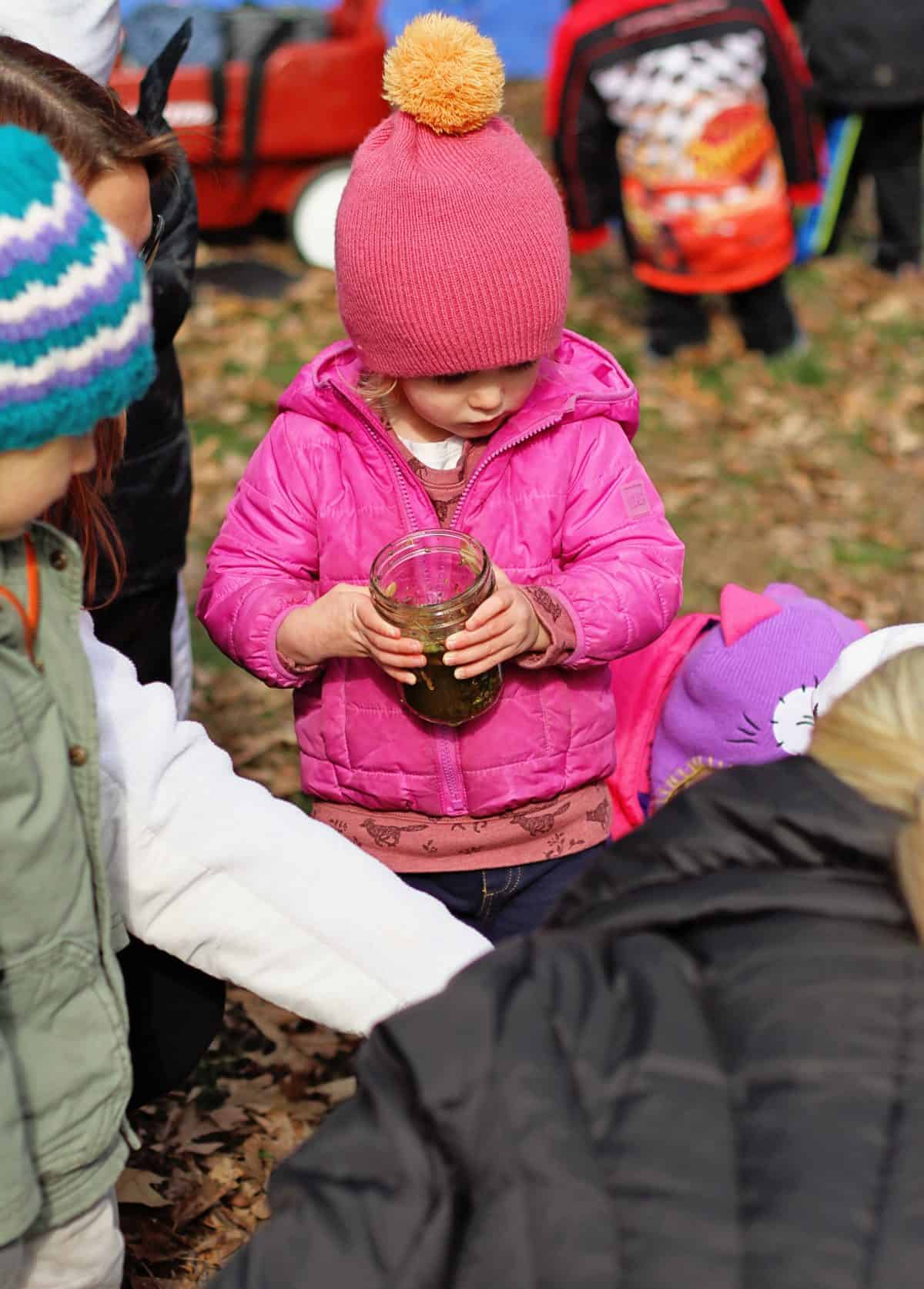
Become a Tinkergarten Leader
Tinkergarten is currently looking for spirited nature-loving individuals to join their team. Tinkergarten Leaders are moms, dads, educators, artists, lawyers and more. Being a Tinkergarten leader is a meaningful opportunity for anyone who values nature, play and learning. It’s also a way for you to make additional income and set your own work schedule. Plus, if you’ve got kids, you can bring them to work, too! You don’t need any formal teaching experience to be a successful Tinkergarten Leader. All you need is a passion and joy for play, a love of the natural world and your community, an ability to connect with kids and a supportive, team spirit.
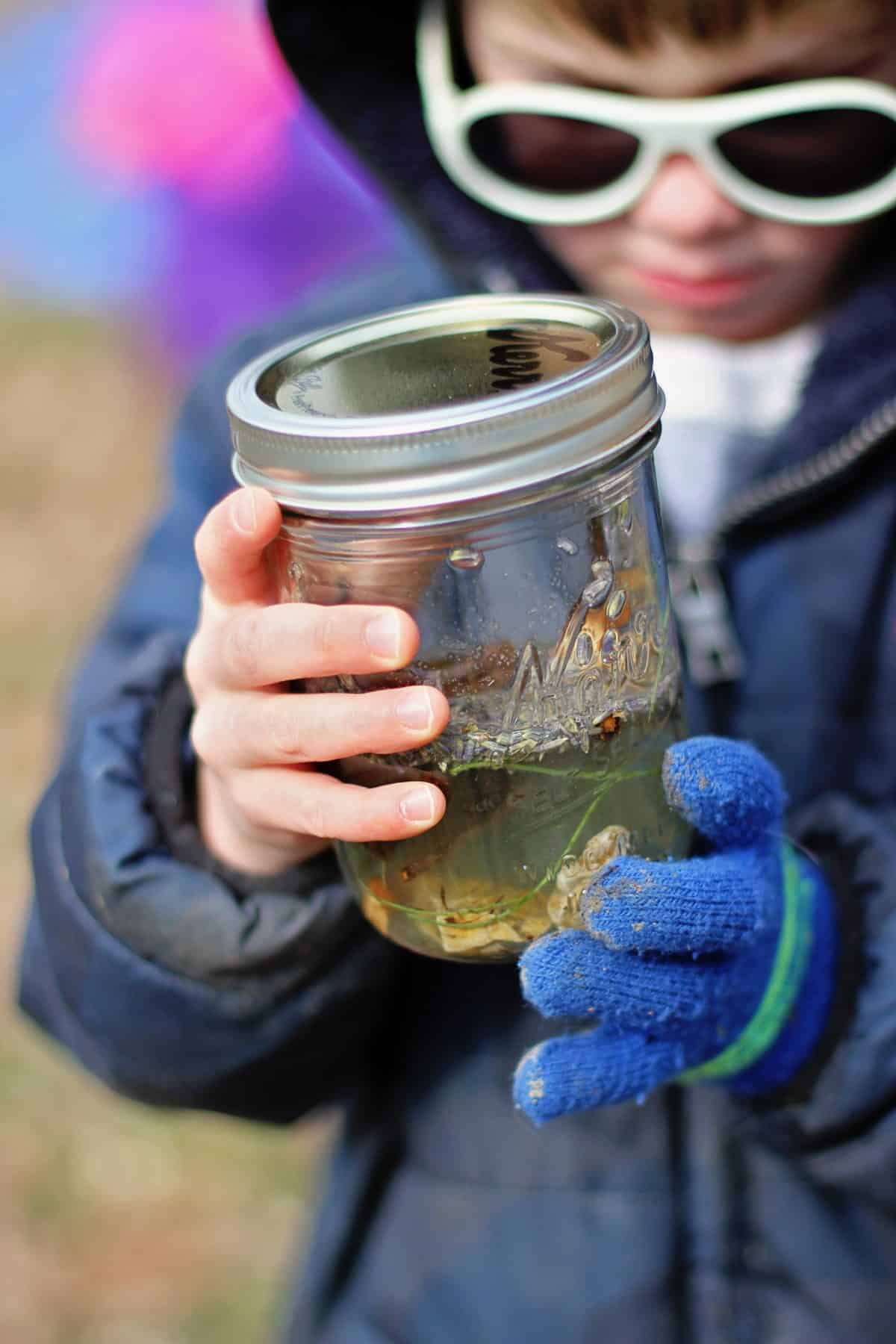
The Tinkergarten team is talented and supportive. You’ll receive comprehensive training in early childhood development, adult development, community outreach, and much more. You choose the time, location and amount of classes to run, so the scope of time commitment is up to you. Training takes place online—choose from day or evening sessions to ensure you can balance the work with life outside of Tinkergarten.
If you’re interested in applying to be a Tinkergarten Leader or learning more about the process or how much you can earn, >>CLICK HERE<< for all the info!

Interview with Tinkergarten Leader LoriAnn Gregory
1. Tell us a little about yourself and your background
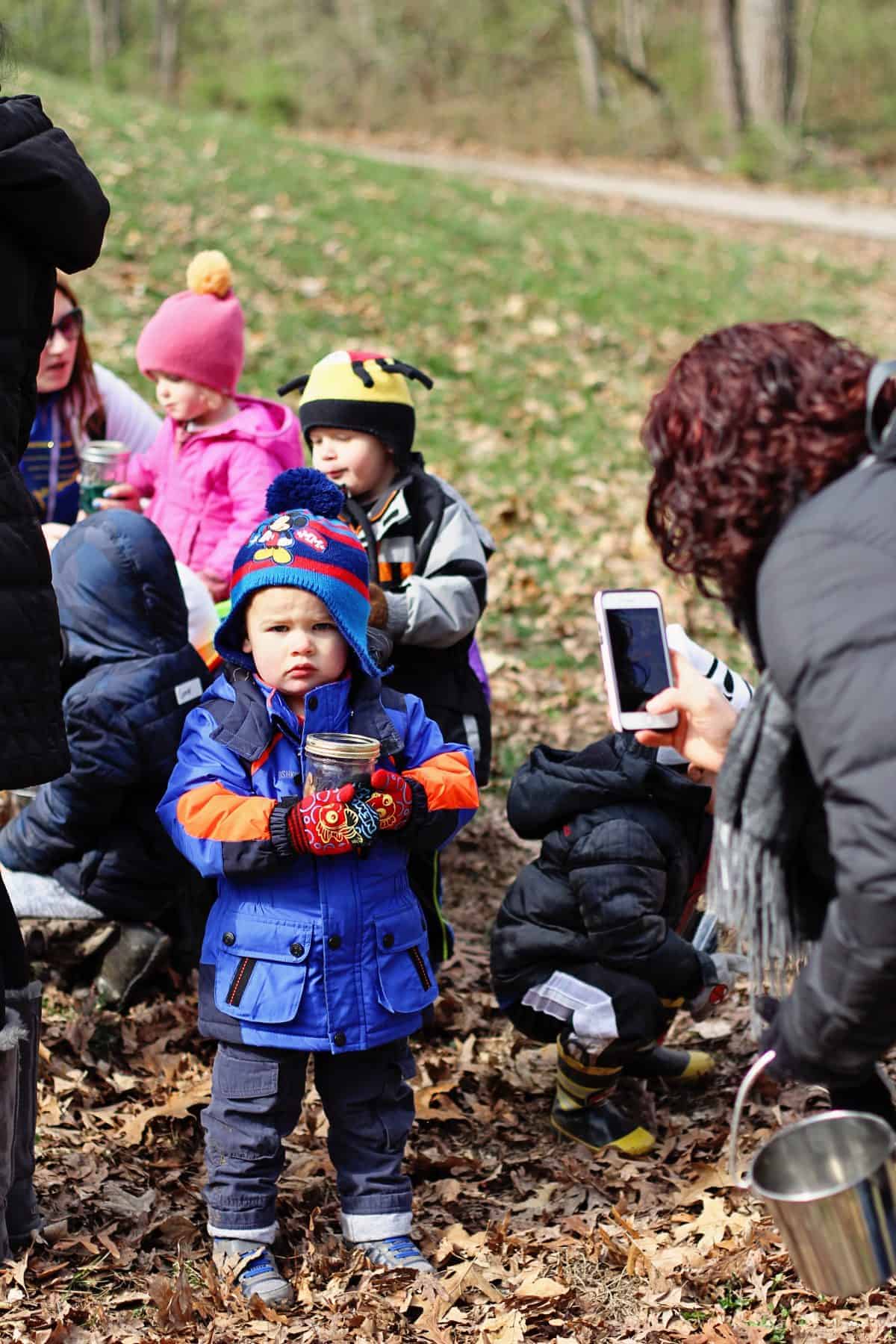
2. Describe your family
My husband and I have two children. My wild 8 year-old daughter would rather be outside, ideally barefoot in a tree, than anywhere else. She celebrated her recent birthday by suiting up in “explorer gear” and exploring the muddy banks of a local wildlife refuge lake. My son is 5 and seems to have the mind of an engineer, constantly surprising us with impressive inventions from loose parts found in the backyard and the recycling bin. My husband joins us on all our hiking, camping, and stargazing adventures, and is especially enthusiastic about the kids’ other main interest, LEGO!
3. Where/when did your love of nature begin?
I loved my childhood summers on my grandparent’s farm, and teenage summers working at an outdoor recreation camp, but I don’t think I really recognized my love for nature specifically until my daughter was born and I began to learn about birds, wildflowers, and animal tracks with her, and to see how spending time in nature calmed and centered me in the same way it clearly did her.
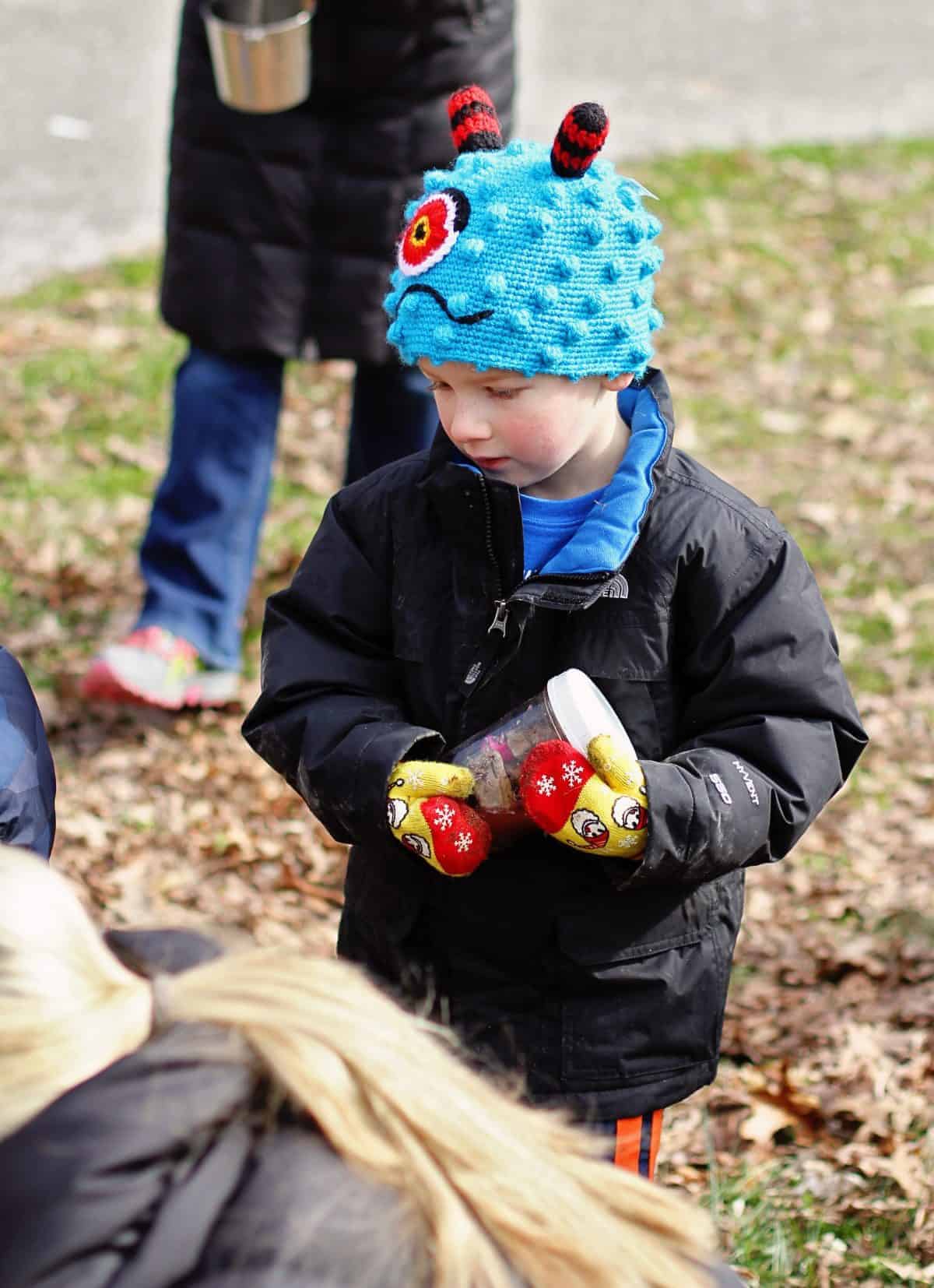
4. What are your favorite outdoor activities to do with your kids?
I especially like camping and canoeing as a family, but in all our outdoor adventures, my favorite memories are those unplanned, still moments between more active activities. When the kids and I quietly picnicked in our sit spots after a long hike last week and saw a juvenile hawk swoop over the heads of nearby joggers (who had headphones in and never looked up!), when our Tinkergarten class time has been over for hours but my kids and others from class are still playing in the “house” formed by low cedar branches while us grown-ups get to chat, when I wake the kids at 3am to see a few shooting stars before they fall back asleep — those are the moments I love most.

5. Have you ever taught before? What made you consider teaching?
Yes, I graduated college with a teaching license and did my student teaching in middle school social studies classes before moving overseas to work with an educational development program. After 5 years there, my family moved back to the U.S., and I began teaching adults in parenting classes. And, now I lead Tinkergarten sessions and homeschool my kids. I’ve said I wanted to be a teacher from the time I was in Kindergarten, but have certainly ended up teaching in different ways than I would have expected!
6. What drew you to the Tinkergarten program/curriculum? How long have you been with them?
We’re a homeschooling family, and I draw inspiration from philosophies including Waldorf, Forest School, Reggio Emilia, and more. A mom I knew online through a Forest School-inspired homeschooling Facebook group told me about Tinkergarten when she began leading in early 2016. I loved what she told me of the curriculum as well as how the weekly classes had developed a community of kids and families, both homeschoolers and other young children. A few months later, I completed my training, and that summer was my first season to lead! I’m currently leading my 8th consecutive season.
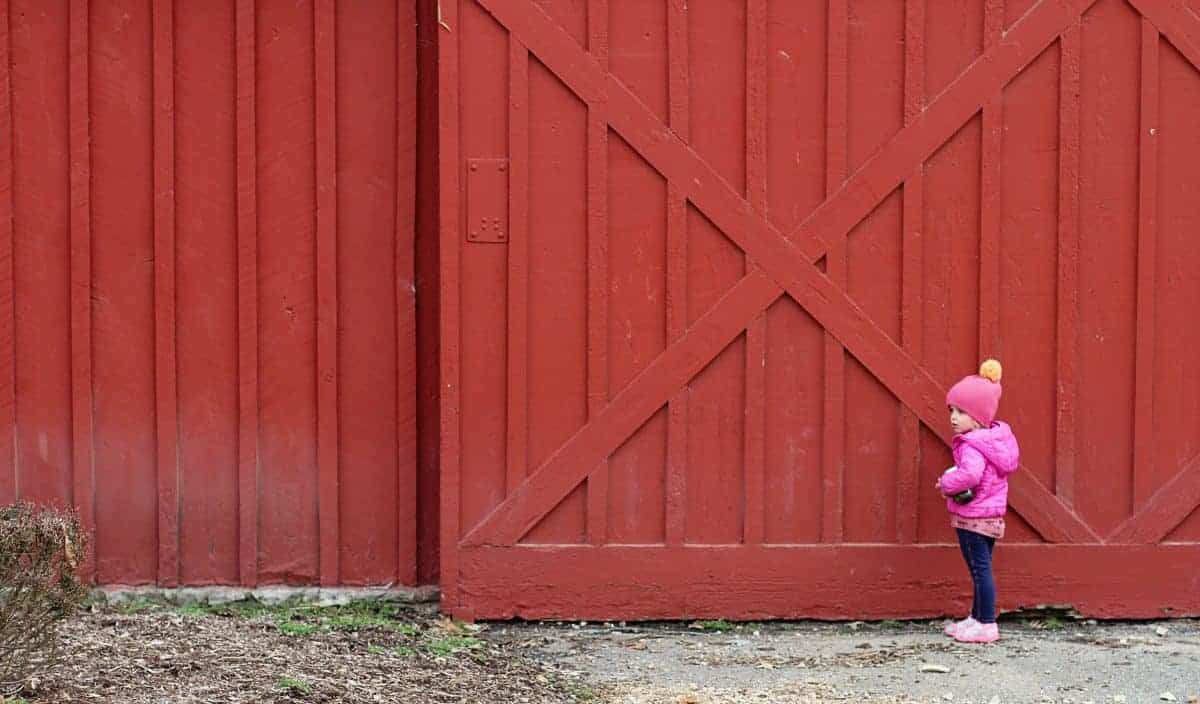
7. What are your favorite Tinkergarten classroom projects?
Tinkergarten leaders joke that every week becomes our new favorite! I’m especially fond of the open-ended silly play inspired by a few favorite stories from my own childhood, like Cloudy With a Chance of Meatballs and Going On a Bear Hunt, several STEM-themed activities we do with materials like boards for balances and rope/buckets for pulleys, and all the sensory-rich experiences ranging from making mud faces on tree trunks to painting thank-you cards for our local parks departments using color from nature (berries, beets, juicy leaves, and dirt!)

8. What are the biggest obstacles parents face regarding getting their kids outdoors more?
I think the biggest obstacles parents face regarding getting their kids outdoors more are scheduling and unknowns. I’m in several outdoor playgroups, and often make park plans with local friends. However, it takes a strong commitment to get everyone’s schedules aligned on a consistent basis. It’s much harder than it feels like it should be! Tinkergarten’s been a great way for us to “schedule in free play,” so to speak.
Unknowns include concerns about “what ifs” (what if my potty training toddler has to go right when we get there; what if they cry about today’s strong wind; what if that plant he’s rolling in is poison ivy). Parents today have questions about what to do in outdoor spaces. Especially if that kind of unstructured play time wasn’t a part of the adult’s own childhood. I know I benefit from spending time outside with others who know things I don’t — whether that’s which bug spray really works or how to empathize with a child’s fears while encouraging them to move past them. The more we get outdoors, the fewer the unknowns. My experiences tell me that I can handle whatever might “go wrong” — and it’ll probably join my favorite memories as a funny story for later.
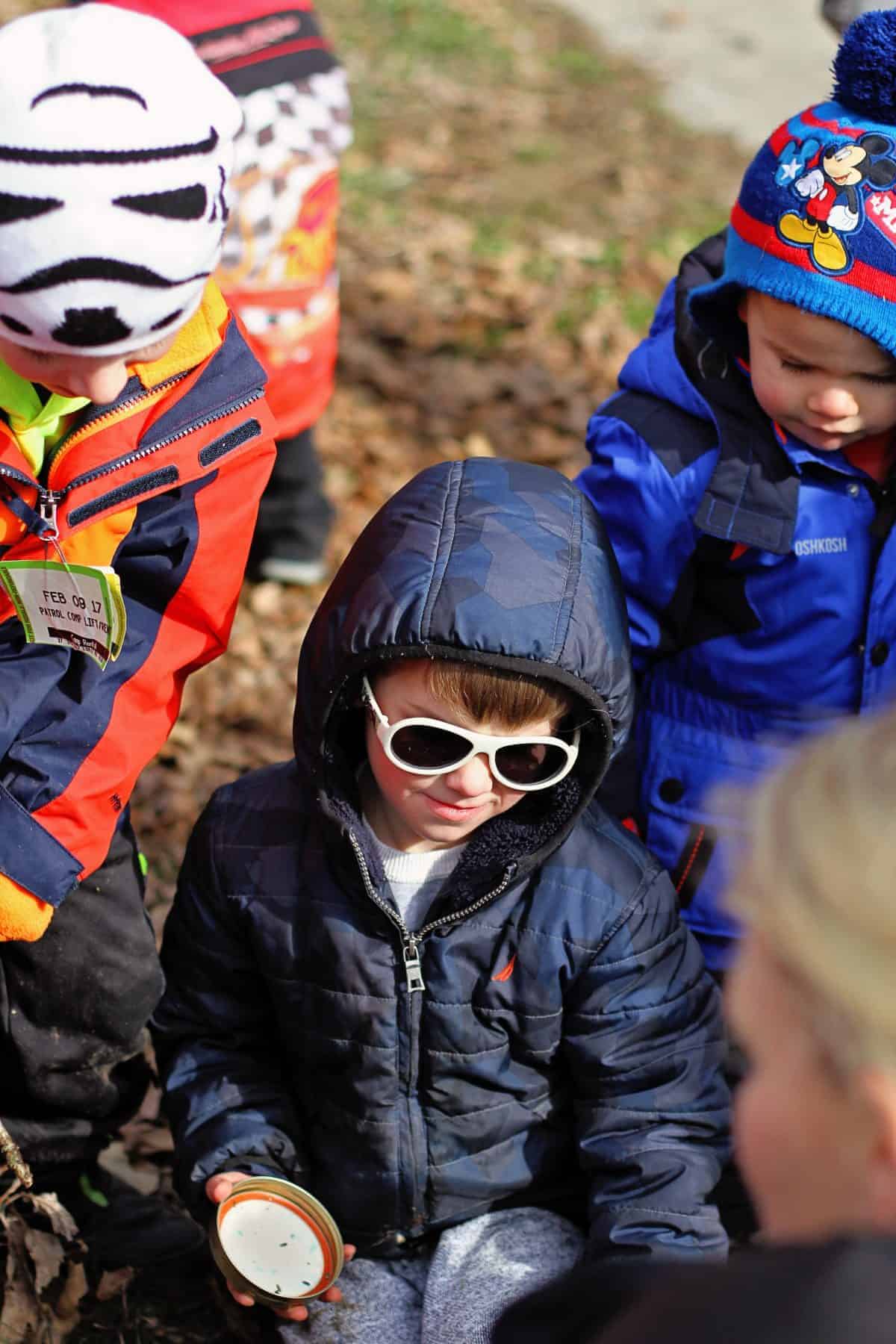
9. What lessons do you want kids (and parents) to take away from your classes?
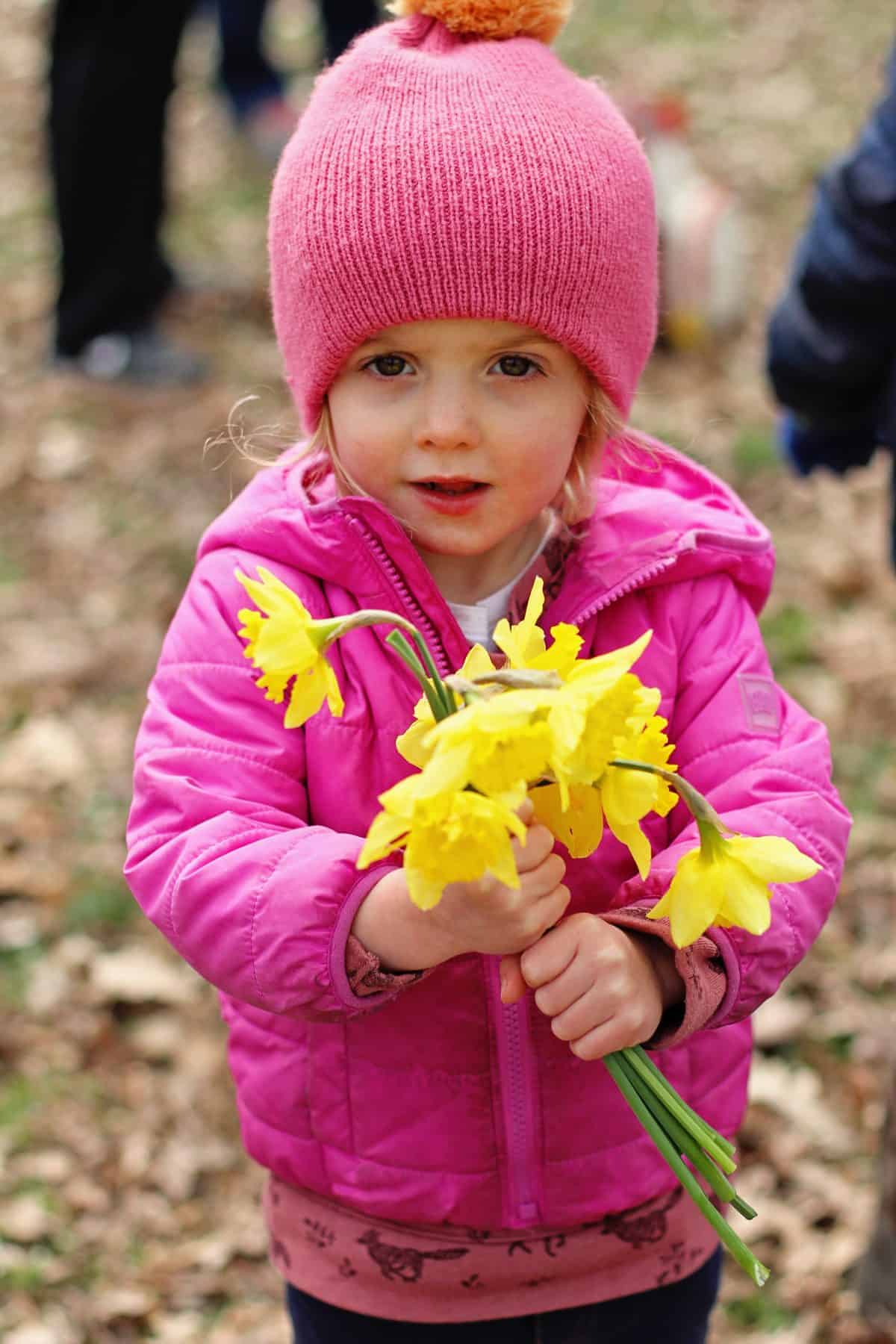
10. What advice would you give someone considering enrolling as a Tinkergarten instructor?

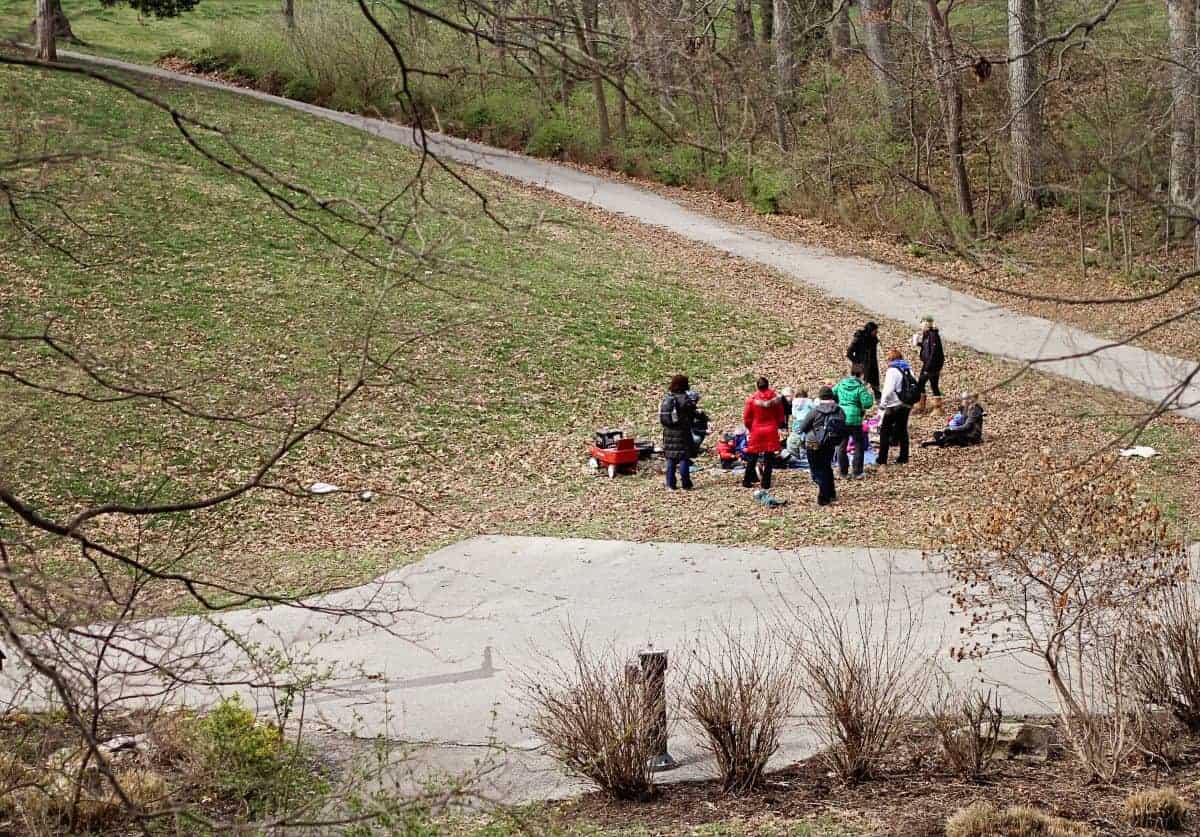
If you’re interested in applying to be a Tinkergarten Leader
or learning more about the process or how much you can earn,
CLICK HERE for all the info!
And be sure to check out the Tinkergarten website to sign up for a Spring session class in your area.
Comments
3 responses to “Everything You Wanted to Know About Tinkergarten”
Love this program!
Ohhh love this and all things fairy! What book did you read?
I loved this article! I just recently heard about Tinkergarten and I know there aren’t any leaders in my area. The article was very informative and I plan to look further into it.

Leave a Reply